Waratah blooms after the bushfires
Some habitats were burnt so badly last summer that we're concerned for a few Waratah species. But as we enter peak flowering season we're also expecting to see a big burst of growth. How is this possible?
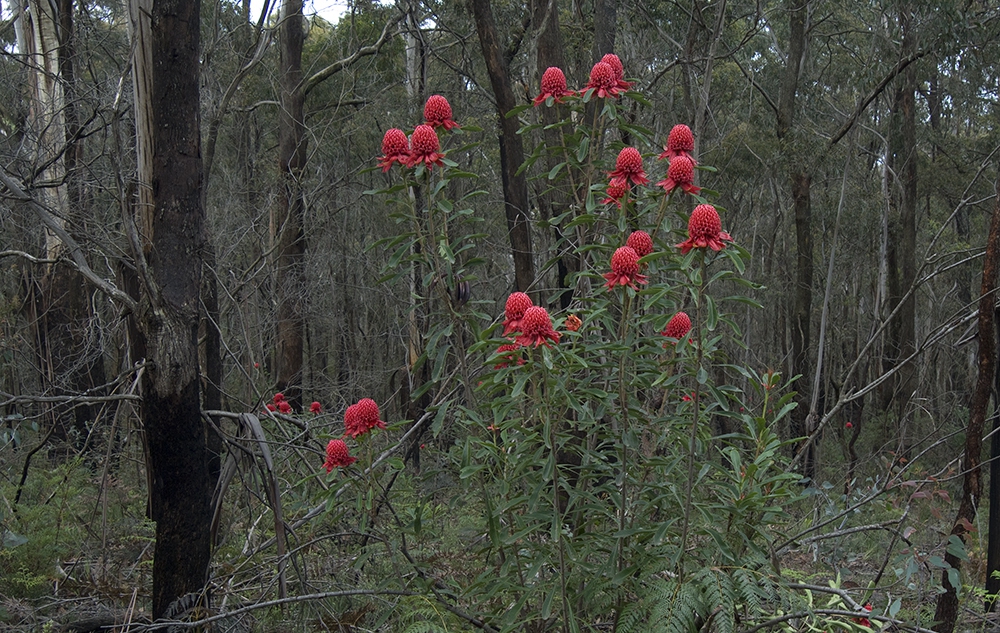
Fire stimulation and survival tools
Waratahs are a ‘resprouting’ species and the main method of regeneration in the wild is sprouting from a massive underground structure called a lignotuber. This structure is a modified stem and can be a metre or more in length and depth, and possibly weigh up to a quarter of a tonne. It’s a marvellous adaptation to fire.
In the wild a number of Waratah stems arise in a patch, which may look random. But it is actually in quite a pronounced radial pattern. These are the stems arising from the lignotuber. Not only will the fires stimulate new flowering stems, nutrients are released to the soil which sustain this new growth. So, they truly will be arising from the ashes.
But fire can still be destructive for Waratahs, especially if it is to hot or too frequent. Some areas north and south of Sydney and down into Victoria were burnt so badly last summer that there are some concerns for the Waratah species Telopea aspera, Telopea oreades and Telopea mongaensis. These will be monitored over coming years to assess the extent of damage.
It is unlikely that too many flowers will be seen in this first flowering season between August and October for the NSW Waratah (Telopea speciosissima). But in the next few years, we can anticipate a great many to be seen.
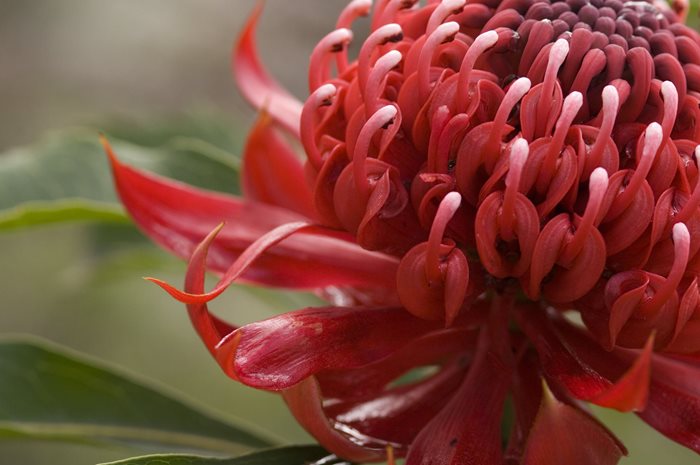
NSW Waratah,Telopea speciosissima.
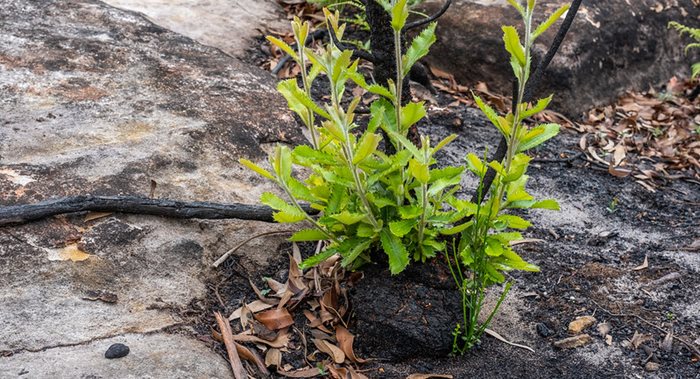
A lignotuber is a woody swelling of the root crown which some plants like the Waratah have as a protection against fire.
Sprouting from seeds
Waratahs can also produce seeds in very elegant seed pods, which often happens on an annual basis. There are usually about twenty seeds in each pod which spring open and release the seeds. It is rare however, that a Waratah seed germinates and becomes a new plant.
There are a couple of reasons for this. Firstly, the seeds are very carbohydrate rich and are therefore an attractive food source for animals. If they do manage to germinate, they may not establish due to lack of water. When a Waratah does establish from seed, this is an important source of natural variation.
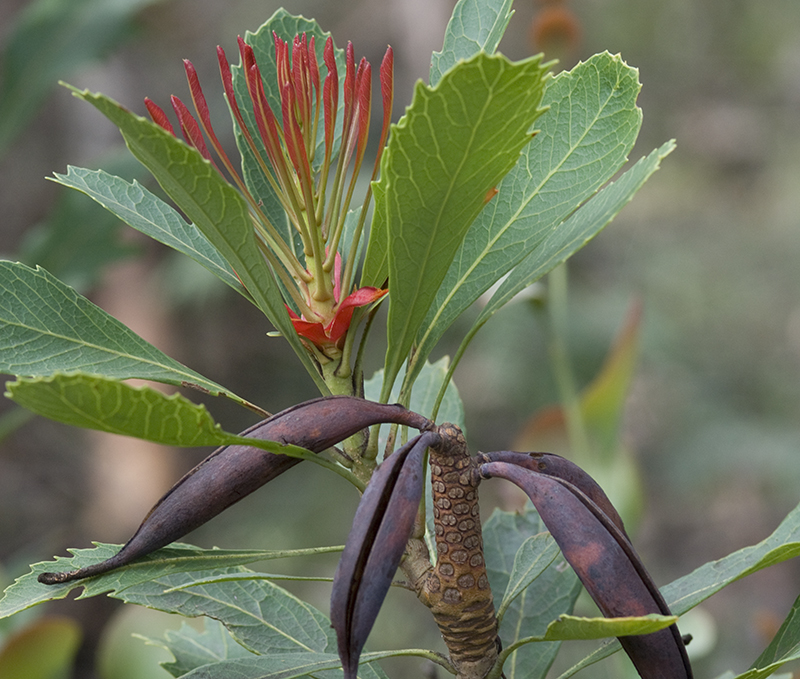
T. speciosissima seed pods
A floral emblem and a bouquet favourite
The Waratah is the NSW floral emblem and it was very nearly the Australian floral emblem, only losing out to Acacia pycnantha because of the NSW Waratah’s rather limited distribution around the Sydney region.
The Waratah bloom is very beautiful, so much so it is used the floral industry and exported overseas. Who remembers the Waratah as the focal flower in the floral bouquets at the Sydney Olympics – twenty years ago this year?
Waratahs used to be harvested from the wild, but this is not sustainable and now the blooms for sale must be from a cultivated source. I have to confess that I find Waratahs so lovable and interesting that I did my Masters and PhD studies on how to grow, breed and conserve them.
There are many beautiful varieties of Waratahs now available as a result of breeding programs using the naturally occurring variation from the wild. Breeding programs are based on selections from the wild that have been grown from cuttings under licence.
Waratahs have large flowers that can be manipulated to cross fertilise from one variety to another. Fortunately for Waratah breeders, one individual variety requires pollen from another variety in order to produce fertile seeds. The resulting seeds are then grown on and the patient breeders must wait at least four years for the results!
The large flowering Waratahs that are used in the floral industry are often from T. speciosissima and are cultivated by specialised growers. Many Waratah plants that can be bought for use in home gardens are the hardier varieties that have been bred to be vigorous as well as beautiful. Hybrids between T. speciosissima and T. oreades (Gippsland Waratah) or T. mongaensis (Braidwood Waratah) are available and these may also flower in autumn.
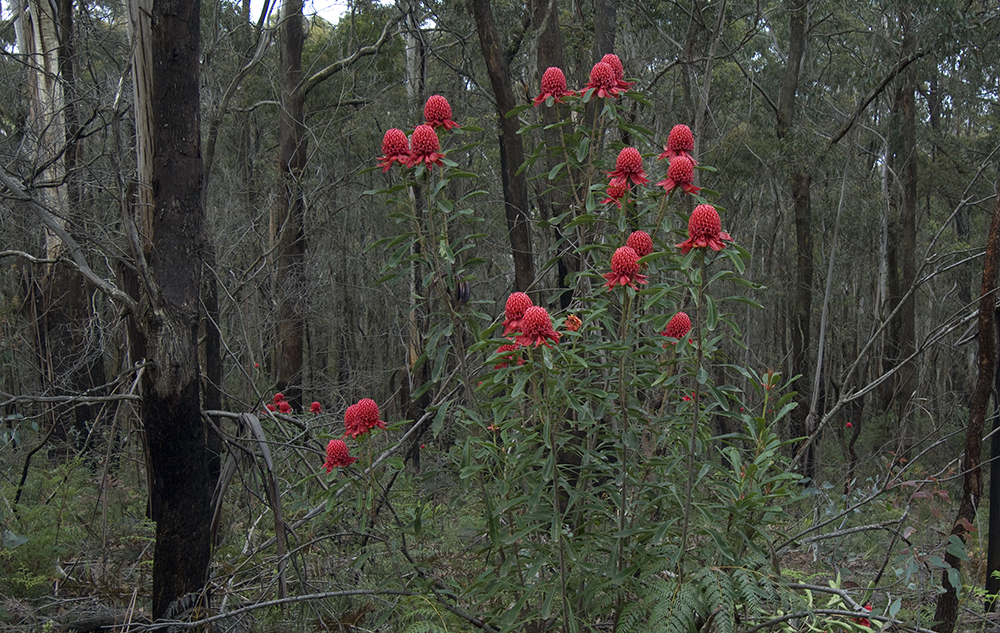
Large flowering T. speciosissima species growing in the wild
White and pink Waratahs
Most Waratah blooms are red, but there is a naturally occurring variety called ‘Wirrimbirra White’ that has been used in breeding programs to produce pink blooms as the white gene is co-dominant with red.
Crossing a white with a red gives blooms in various shades of pink. Backcrossing pinks gives a range of white, red and pink. There are also varieties with kooky green bracts or starry white flecks on each of the flowers. By the way, each Waratah bloom consists of around 100 to 250 individual flowers generally growing in a cone shape giving them that great 3-D look!
Much can still be done to improve the horticultural characteristics of Waratahs, in particular, to improve resistance to diseases like Phytophthora root rot and, the Holy Grail – to extend the flowering season past spring or earlier than autumn. Imagine a Waratah blooming at Christmas!
But in the end, conserving all of these species and their natural variation in the wild is of the utmost importance.
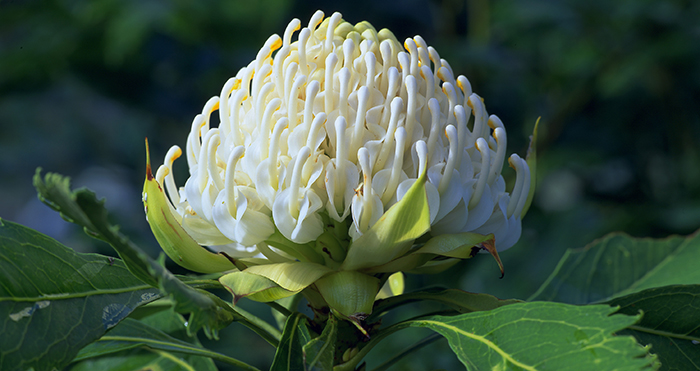
Naturally occurring white variety of Waratah called ‘Wirrimbirra White’
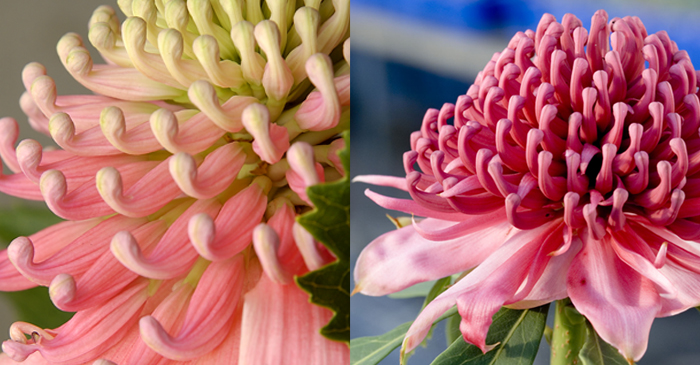
Crossing a white Waratah with a red gives blooms in various shades of pink
Check out our displays or grow your own
If you'd like to see stunning Waratah displays, head to the Blue Mountains Botanic Garden Mount Tomah and the Australian Botanic Garden Mount Annan between August and October. You can also read about tips on growing your own Waratah at home.
If you are a journalist and have a media enquiry about this story, please click here for contact details and more information.